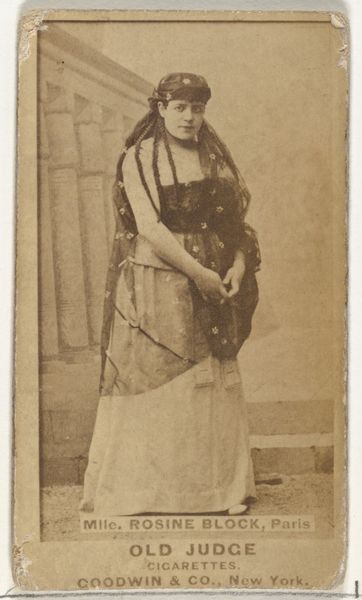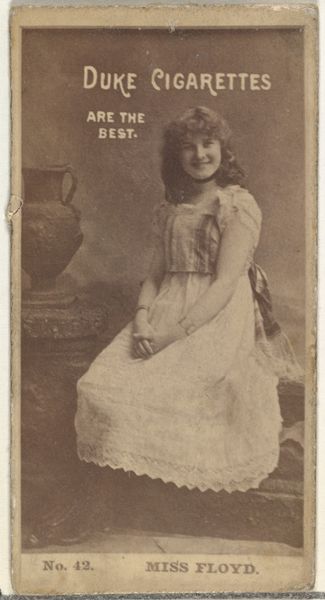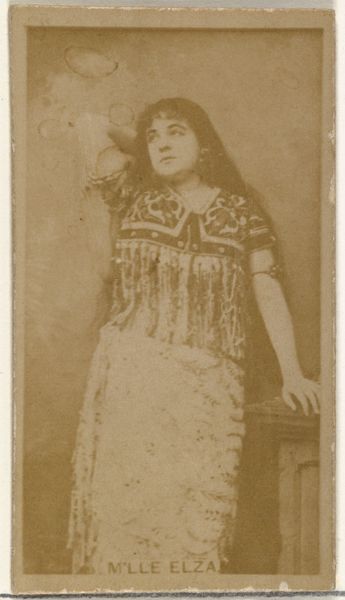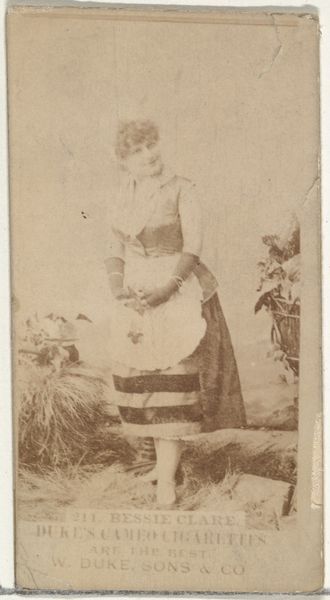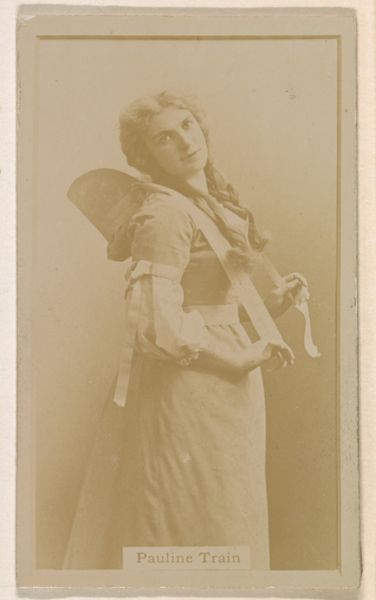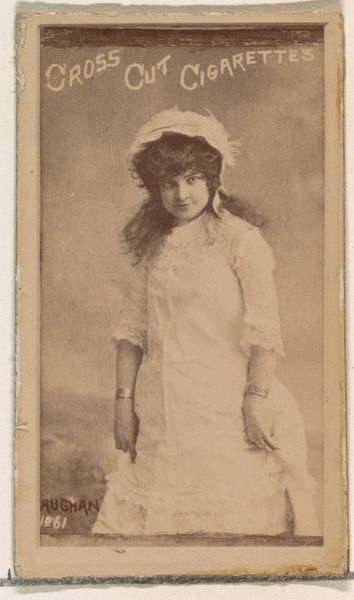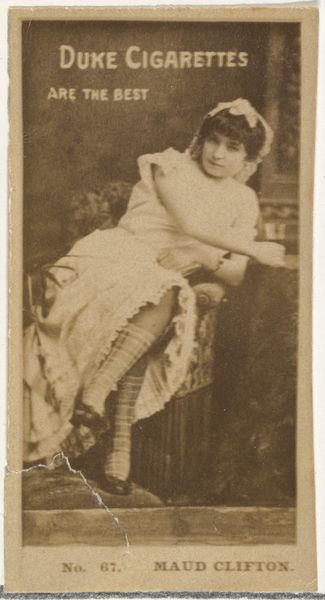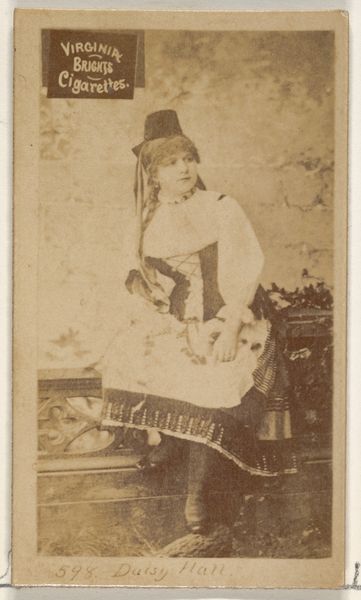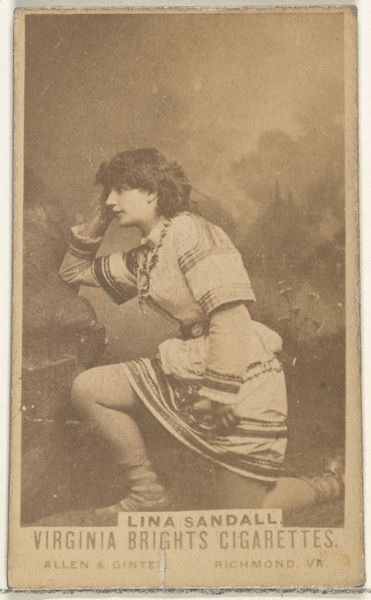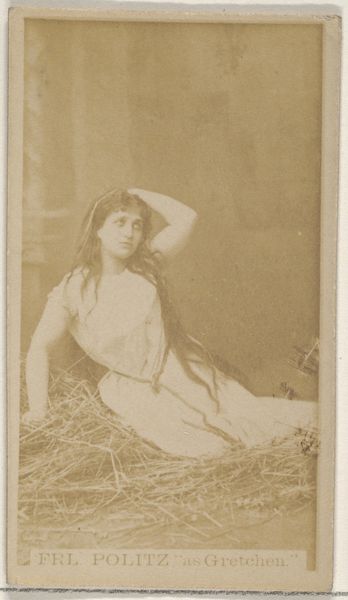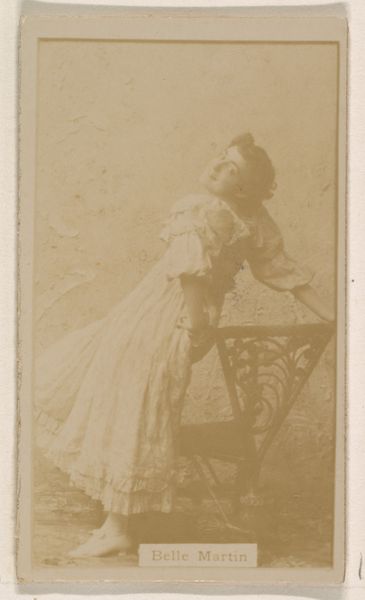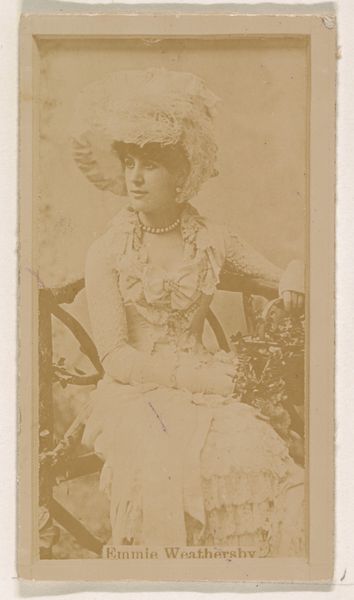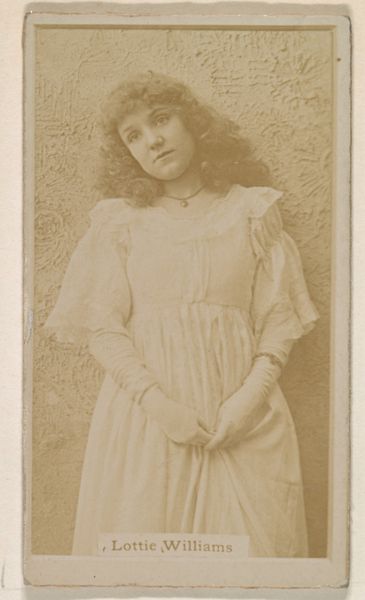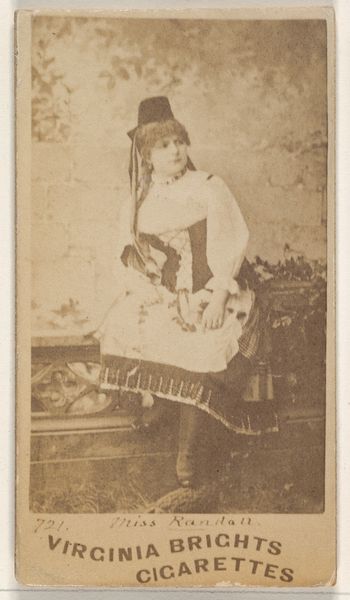
Lee Jarvis, from the Actors and Actresses series (N145-8) issued by Duke Sons & Co. to promote Duke Cigarettes 1890 - 1895
0:00
0:00
drawing, print, photography
#
portrait
#
drawing
# print
#
photography
#
genre-painting
Dimensions: Sheet: 2 11/16 × 1 3/8 in. (6.8 × 3.5 cm)
Copyright: Public Domain
Curator: Here we have "Lee Jarvis, from the Actors and Actresses series," a piece created between 1890 and 1895 by W. Duke, Sons & Co. It’s a photographic print, part of a larger series designed to promote Duke Cigarettes. Editor: It’s surprisingly intimate for what is essentially an advertisement. The sepia tone and the subject's gentle expression give it a nostalgic, almost wistful feel. Curator: These cards were hugely popular; distributed in cigarette packs, they made celebrity accessible to a broad public. Actresses, athletes, even royalty, were transformed into collectible commodities. Editor: That act of commodification, especially concerning women, is something I immediately reflect on. We must consider the historical power dynamics at play—the male gaze inherent in the distribution of these images. Was Lee Jarvis compensated fairly? What control did she have over her image? Curator: A vital point. While it seems straightforward on the surface, the card raises significant questions about labor, image rights, and early forms of celebrity culture. These were pivotal moments in establishing what that culture means. Editor: I'm intrigued by the staged, almost theatrical setting. The small chair she's perched upon feels like a prop. It creates an interesting tension between authenticity and constructed identity. This blurring, however, reveals much about societal expectations. Curator: And it exposes a complicated relationship. As photography became more democratized, who decided which image represented a performer? In what ways did it shape public perception, and to what extent was the individual’s real identity effaced for an imposed ideal? Editor: It offers us a tiny glimpse into how image and identity were manipulated – and, to some extent, are still being manipulated today – particularly when thinking of issues of race, gender, class and power. Curator: I agree. Looking at it today, one might view this as a seemingly simple, aged portrait, but situating the image within its historical and cultural contexts gives us the tools for necessary deconstruction. Editor: Indeed, something seemingly inconsequential ends up asking serious questions!
Comments
No comments
Be the first to comment and join the conversation on the ultimate creative platform.
